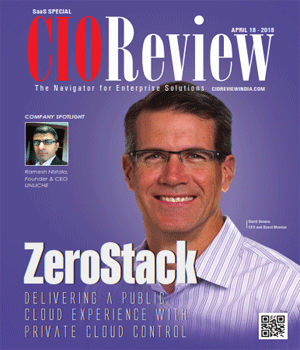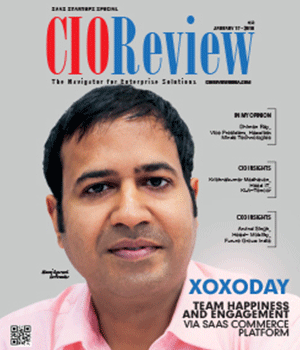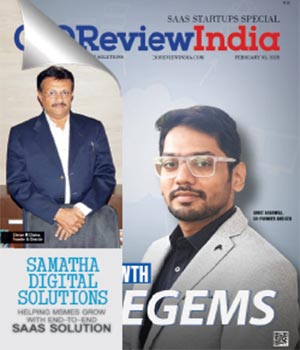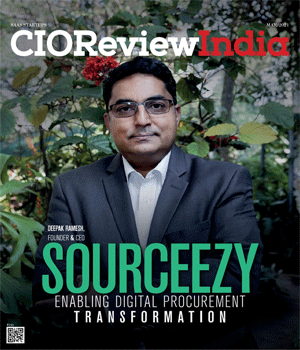
Surviving in a Two-Speed World
Rajiv Gupta, Partner & Director, The Boston Consulting Group | Tuesday, 22 March 2016, 11:40 IST
 A few months back the promoter of a consumer goods company was contemplating how to disrupt his business model through digital interventions. Omnichannel, digital store, augmented reality were all in play. The CIO of the company was duly entrusted the task of delivering the same in conjunction with the CMO. It was perceived to be a big challenge. The challenge though did not come only in the form of implementing digital enhancements; it was equally about hooking up the digital enhancements to the enterprise backbone to realize the end-to-end outcomes such as ordering, fulfillment, payment and invoicing. And therein lays the challenge for a modern day CIO. How does he or she balance the fast growing digital needs of the organization that demands ever faster turnaround times with the traditional turnaround times required to make changes to the older enterprise systems such as ERPs? Add to this the competition with non-traditional competitors (such as banks competing with Airtel Money or Paytm Wallet) and the speed with which these "banks" deploy technology solutions in a green-field setup versus traditional banks trying to stitch apps to monolithic core banking solutions.
A few months back the promoter of a consumer goods company was contemplating how to disrupt his business model through digital interventions. Omnichannel, digital store, augmented reality were all in play. The CIO of the company was duly entrusted the task of delivering the same in conjunction with the CMO. It was perceived to be a big challenge. The challenge though did not come only in the form of implementing digital enhancements; it was equally about hooking up the digital enhancements to the enterprise backbone to realize the end-to-end outcomes such as ordering, fulfillment, payment and invoicing. And therein lays the challenge for a modern day CIO. How does he or she balance the fast growing digital needs of the organization that demands ever faster turnaround times with the traditional turnaround times required to make changes to the older enterprise systems such as ERPs? Add to this the competition with non-traditional competitors (such as banks competing with Airtel Money or Paytm Wallet) and the speed with which these "banks" deploy technology solutions in a green-field setup versus traditional banks trying to stitch apps to monolithic core banking solutions.
The reality of living in, what we call a "two-speed world" is now starker than ever. So how do organizations navigate through this rapidly changing landscape?
It requires a fundamental shift in thinking, especially in four areas:
1. Invest in making your enterprise backbone more modular
Digital solutions do not take a long time to develop; stitching them to the enterprise systems does. The problem is even more accentuated when the organization has a traditional "tightly coupled" IT architecture. This is where Service Oriented Architecture (SOA) comes in - first by breaking a traditional application down into common, repeatable “services” that can be used by other applications, internal and external – independent of the computing platforms on which those "other applications" reside. And, second by building a middleware layer (ESB), to host these repeatable services. This speeds up time to market, increases RoI on incremental IT spend, lowers risk of defects and increases chances of on-time delivery. Another increasingly important benefit of SOA is the ability for your systems to link up to 3rd parties. As banks and financial institutions look to integrate increasingly with the wider SME ecosystem, the agility to plug-and-play 3rd party applications withouttouching your enterprise core becomes a big source of competitive advantage.
2. Change your procurement process
The vendor management department of a large public sector bank recently modified the way it had been evaluating vendors for past 20 years. It moved from traditional cut-off criteria, heavily biased towards larger IT Services companies that ruled out "garage vendors" - young, non-traditional digital vendors and start-ups. It appreciated the need for 'horses for courses' –breadth and scale for large enterprise wide systems transformations and agility and creativity for fast turnaround digital applications, in order to deliver it more expeditiously.
3. Recognize what you can do and what you cannot, quickly; time is of essence
A leading institution recently spent 24 months trying to build an advanced analytics capability. And the capability did not get built – it was 'death by a thousand cuts'. From the lead's own lack of understanding of the non-traditional "analytics" space, especially what lay beyond standard Excel and regression analysis, to lack of knowledge of the people skill-set needed, the inability to hire good people and give them a sustainable career path in analytics… the list can go on. The organization needs to decide if the capability (e.g. analytics) they want to build is strategically important for them or not. If it is, then there is no point nipping away at the edges; either hire the right lead and team quickly or outsource the capability to get it off the ground and incubate it even if one plans to bring it back in-house subsequently. If you have to do it, do it fast.
4. Be Agile
Agile, the precursor to waterfall, is reborn. And their relevance in today's two-speed world, involving digital solutions and big data analytics, is more than ever before. The business executive's comfort in seeing outcomes come through in a series of sprints; the scrum manager's ability to translate unstructured requirement into a cogent algorithm; and the digital agency's ability to turn around real solutions in weeks have created a sense of urgency very different from the large enterprise transformations over the decades. A lower cost of failure and an openness to experimentation helps; misunderstanding Agile for poor requirement specification or chaos, however, does not. Organizations do need to treat Agile with maturity else the resurrection will be short lived.
In this two speed world, organizations need to embrace digital and the acceleration it brings; however, they cannot ignore enterprise systems and their intricacies, nuances and therefore slow speed of change and need to have a structure to cater to both.
CIO Viewpoint
2020 To Be A Trendsetting Year For The SaaS...
By Abhilash Garg, VP IT (SaaS), DMI Financial Private Limited
Baseline It Transformation In Digital Era
By Shibin Chulliparambil, Head of IT, Mafatlal Industries Limited
Scenarios And Challenges In Personal Data...
By Ajay Kumar, Group Head IT, Polyplex
CXO Insights
The Rise Of Developer-LED Innovation And...
By Subrato Bandhu, Regional Vice President, OutSystems
Four Questions To Answer Before Considering A...
By Shrikant Navelkar, Director, Clover Infotech
3 Focus Areas For An Autonomous Driving Revolution











